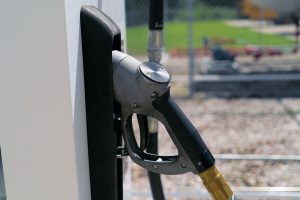Distributing Propane
During the 1970s America imported approximately 35 percent of its oil supply. Today, about 60 percent of the oil consumed in the U.S. is imported, with 70 percent of that used by modes of transportation. The U.S. imports an average of 274 million barrels of crude oil each month. Countries where America imports much of its crude oil from include from Saudi Arabia, Nigeria, Iraq, Mexico, Venezuela, and Algeria.
Americans recognize the need to reduce our dependence on foreign oil. This is a critical issue facing the country at every level including individuals, corporations, and state and local government. Accelerating the adoption of propane autogas as an alternative fuel option not only helps us use a domestically produced fuel, it has the power to lessen our country’s carbon footprint and increase the longevity of engines without compromising reliability and performance.
Producing Propane
Propane is an energy-rich gas chemically known as a C3H8, and sometimes referred to as liquefied petroleum gas or LPG. About 90 percent of propane consumed in the United States is domestically produced, and an additional 7 percent comes from Canada. Propane is a by-product of natural gas processing and petroleum refining, with approximately 75 percent derived from natural gas. The processing of natural gas involves removal of methane, butane, propane, and heavier hydrocarbons, in order to prevent condensation of these volatiles in natural gas pipelines. The oil refineries produce propane, butane, and other gases as a by-product during crude oil refining.
Propane is shipped from its point of production to bulk distribution terminals – largely through pipelines. After it is produced, North American propane is stored in huge salt caverns located in Kansas, Texas, and Alberta, Canada. These salt caverns were hollowed out in the 1940s, and can store 80 million or more barrels of propane. When the propane is needed, most of it is shipped by pipelines to other areas of the country for use by customers. Propane is also shipped by barge, truck, tanker ship, and railway.
Supplying Propane
Since propane is not produced for its own sake, but as a by-product, the volume made available from natural gas processing and oil refining cannot be adjusted when prices and/or demand for propane fluctuate. Currently, propane supplies about 4 percent of U.S. energy needs.
In addition, the U.S. has the world’s largest propane storage capacity, making the country well positioned to compete for growing supplies of propane being produced with the expanding global trade of liquefied natural gas.
Distributing Propane
Propane, recognized as a readily available and secure energy source, can effectively power equipment, warm homes, cook food, and fuel vehicles. Current supply is greater than demand, and existing propane supply and distribution networks can support a much larger market demand than currently exists.
Already the third most widely used engine fuel behind gasoline and diesel, propane has a national infrastructure in place. Thousands of refueling stations, up to 56,000 miles of pipeline, an established distribution process, and more than 6,000 retail propane dealer locations makes propane readily available throughout the U.S. Propane is the only alternative fuel with fueling stations in every state. To find the location of propane refueling stations, visit the Department of Energy’s Alternative Fuels & Advanced Vehicles Data Center.
Fueling Vehicles
In addition to the thousands of propane autogas fueling stations found throughout the U.S., there are two additional options for refueling with propane autogas — skid-mount and permanent stations. With skid mount, above ground refueling stations typically come pre-assembled and are easy and inexpensive to have installed. Permanent stations feature underground propane storage tanks. Both have dispensers for ease of use similar to conventional refueling. There are many different federal and state tax incentives for installing new propane fueling structures and fueling with propane.
Sources:
Alternative Fuel Data Center
Propane Education & Research Council
Energy Information Administration













